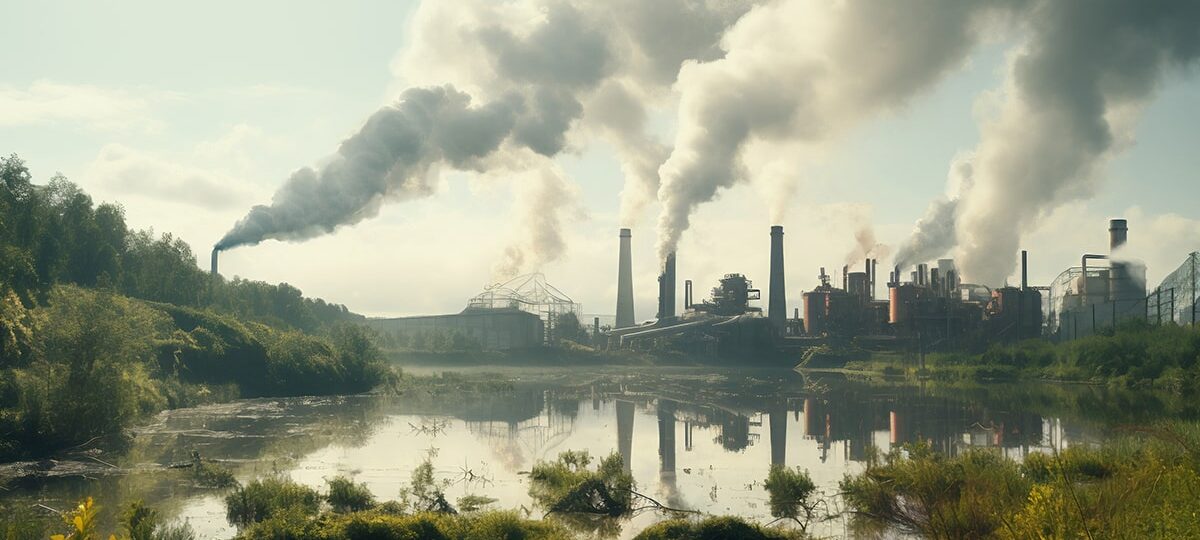The world is changing. From rising temperatures to extreme weather patterns, the environment is undergoing transformations that affect every aspect of life. But what’s causing these global environmental changes, and how does science explain them?
In this article, we’ll explore the science behind these changes, including human impacts, natural processes, and the crucial role science plays in understanding and addressing these challenges.
1. Understanding Climate Change: The Role of Greenhouse Gases
At the heart of most environmental changes today is climate change. The Earth’s climate has naturally fluctuated throughout history, but recent decades have seen an unprecedented rise in global temperatures. The primary driver of this rapid warming is the increased concentration of greenhouse gases (GHGs) in the atmosphere. These gases, such as carbon dioxide (CO2), methane (CH4), and nitrous oxide (N2O), trap heat from the sun, leading to a warming effect known as the “greenhouse effect.”
Human activities like burning fossil fuels, deforestation, and industrial agriculture have significantly increased the levels of these gases, accelerating the warming process. Scientists now predict that if these trends continue, we could see temperature rises of 1.5°C to 4°C by the end of the century, which could result in devastating environmental consequences.
2. The Tipping Point: Melting Ice and Rising Sea Levels
One of the most visible impacts of climate change is the melting of polar ice caps and glaciers. As global temperatures rise, the ice that covers the Arctic and Antarctic is melting at an alarming rate. This contributes directly to rising sea levels, which have been climbing steadily for decades. According to NASA, global sea levels have risen by about 8 to 9 inches (21 to 24 cm) since 1880.
The implications of rising sea levels are profound. Coastal cities around the world, including New York, Miami, and Shanghai, face the threat of flooding and even submersion. Many small island nations are already experiencing the loss of land due to encroaching waters. These changes threaten millions of people, disrupt ecosystems, and intensify extreme weather events.
3. Extreme Weather: A Growing Concern
Extreme weather events, from hurricanes and tornadoes to droughts and wildfires, are becoming more frequent and severe as the planet warms. Warmer air holds more moisture, fueling more intense storms, while changes in wind patterns can drive heatwaves and droughts. The rising temperature also contributes to the increasing frequency of wildfires, especially in regions like Australia, California, and the Mediterranean.
In addition to the immediate impact on communities, these events wreak havoc on agriculture, infrastructure, and ecosystems. The increased intensity of tropical cyclones, for example, has led to stronger storms, such as Hurricanes Katrina and Maria, which devastated parts of the United States and the Caribbean.
4. The Role of Deforestation in Environmental Change
Deforestation is another key factor driving environmental degradation. Forests act as carbon sinks, absorbing large amounts of CO2 from the atmosphere. When trees are cut down or burned, this stored carbon is released back into the atmosphere, further exacerbating global warming.
In addition to contributing to climate change, deforestation also leads to biodiversity loss, soil erosion, and disruptions to the water cycle. Tropical rainforests, such as the Amazon, are particularly vulnerable, and their destruction threatens the livelihood of indigenous communities and countless species of plants and animals.
5. Biodiversity Crisis: The Loss of Species
As environmental changes unfold, biodiversity—the variety of life on Earth—is under severe threat. Climate change, habitat loss, pollution, and overexploitation of resources are pushing species to extinction at an alarming rate. The Intergovernmental Science-Policy Platform on Biodiversity and Ecosystem Services (IPBES) reports that around one million species are currently at risk of extinction.
This biodiversity crisis is not just an ecological problem. It has far-reaching consequences for food security, medicine, and overall human well-being. Ecosystems rely on a delicate balance of species to function, and their loss can disrupt vital services like pollination, water purification, and climate regulation.
6. Human Impact and the Path Forward
The science behind environmental changes is clear: human activities are driving much of the disruption we see today. However, it’s important to recognize that humans also have the power to mitigate and even reverse some of these changes.
Renewable energy sources, such as solar, wind, and hydropower, are essential to reducing our reliance on fossil fuels. Innovations in energy efficiency, electric vehicles, and sustainable agriculture also offer promising solutions. In addition, protecting and restoring forests, wetlands, and other natural ecosystems can help sequester carbon and preserve biodiversity.
International cooperation will be crucial in addressing these global challenges. Agreements like the Paris Agreement, which seeks to limit global temperature rise to well below 2°C, highlight the importance of collective action in combating climate change.
7. The Role of Science and Technology
Science and technology will continue to play a pivotal role in understanding and addressing environmental changes. Satellite technologies, for example, are providing real-time data on deforestation, ice melt, and sea level rise. Advances in genetic engineering and biodiversity monitoring can help conserve endangered species and restore ecosystems.
Moreover, public awareness and education are key to empowering individuals and communities to take action. By fostering a deeper understanding of the science behind environmental changes, we can all contribute to a more sustainable and resilient future.
Conclusion: A Call to Action
Global environmental changes are undeniable, and their impacts are already being felt around the world. The science behind these changes reveals the intricate and interconnected nature of our planet’s systems. While the challenges are daunting, there is hope in the power of knowledge, innovation, and collective action. By understanding the science and taking meaningful steps to address the root causes of environmental change, we can work together to build a more sustainable world for future generations.

